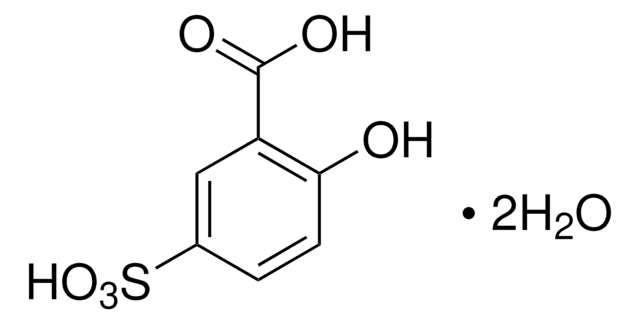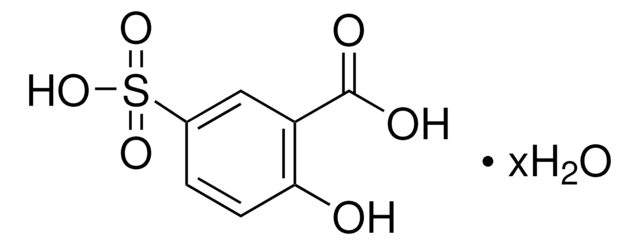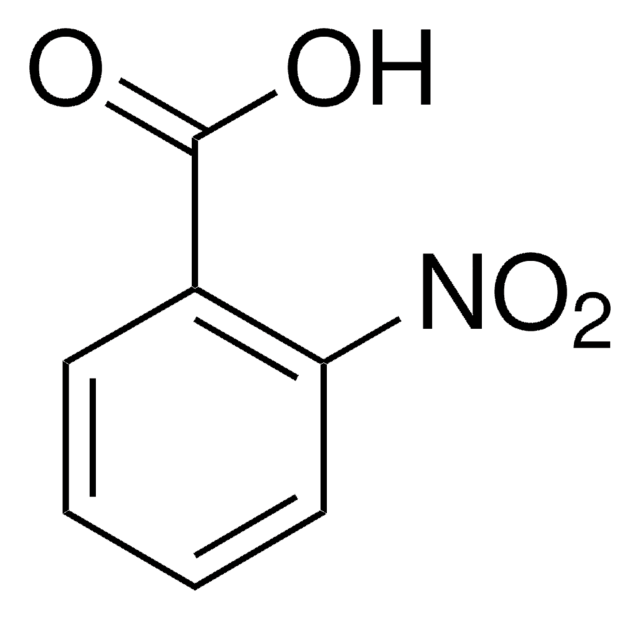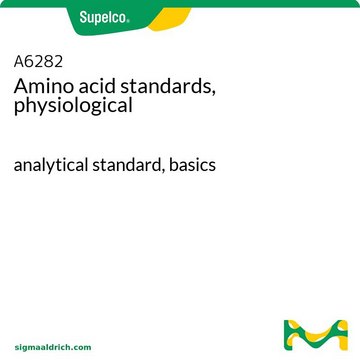S3147
5-Sulfosalicylic acid dihydrate
suitable for electrophoresis, ≥99%
Sinonimo/i:
2-Hydroxy-5-sulfobenzoic acid
About This Item
Prodotti consigliati
Livello qualitativo
Saggio
≥99%
Forma fisica
powder or crystals
tecniche
electrophoresis: suitable
Impurezze
≤0.02% Insoluble matter
≤0.05% Salicylic Acid
Punto di fusione
105-110 °C (lit.)
Solubilità
water: soluble 100 mg/mL, clear, colorless
Anioni in tracce
chloride (Cl-): ≤0.001%
sulfate (SO42-): ≤0.035%
Cationi in tracce
Fe: ≤0.001%
heavy metals (as Pb): ≤0.002%
Stringa SMILE
[H]O[H].[H]O[H].OC(=O)c1cc(ccc1O)S(O)(=O)=O
InChI
1S/C7H6O6S.2H2O/c8-6-2-1-4(14(11,12)13)3-5(6)7(9)10;;/h1-3,8H,(H,9,10)(H,11,12,13);2*1H2
BHDKTFQBRFWJKR-UHFFFAOYSA-N
Cerchi prodotti simili? Visita Guida al confronto tra prodotti
Descrizione generale
Applicazioni
Risultati analitici
Avvertenze
Danger
Indicazioni di pericolo
Classi di pericolo
Eye Dam. 1 - Skin Corr. 1B
Codice della classe di stoccaggio
8A - Combustible corrosive hazardous materials
Classe di pericolosità dell'acqua (WGK)
WGK 1
Punto d’infiammabilità (°F)
Not applicable
Punto d’infiammabilità (°C)
Not applicable
Dispositivi di protezione individuale
dust mask type N95 (US), Eyeshields, Gloves
Certificati d'analisi (COA)
Cerca il Certificati d'analisi (COA) digitando il numero di lotto/batch corrispondente. I numeri di lotto o di batch sono stampati sull'etichetta dei prodotti dopo la parola ‘Lotto’ o ‘Batch’.
Possiedi già questo prodotto?
I documenti relativi ai prodotti acquistati recentemente sono disponibili nell’Archivio dei documenti.
I clienti hanno visto anche
Il team dei nostri ricercatori vanta grande esperienza in tutte le aree della ricerca quali Life Science, scienza dei materiali, sintesi chimica, cromatografia, discipline analitiche, ecc..
Contatta l'Assistenza Tecnica.








